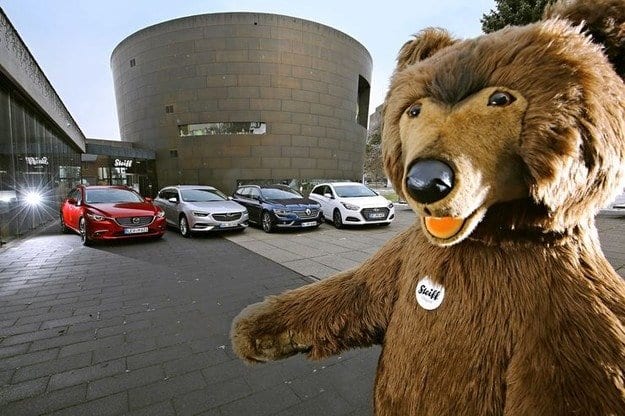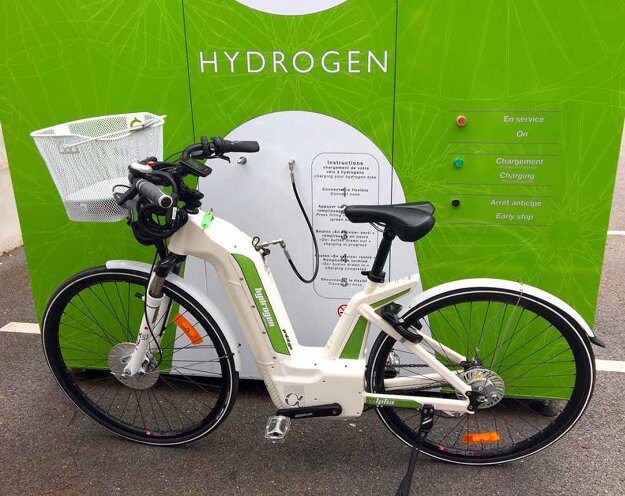
Test drive Hyundai i40 Estate, Mazda 6 Sport Estate, Opel Insignia Sports Tourer, Renault Talisman Grandtour

Competition of four family dreadnought class vans
Mid-range station wagons should provide not only space and comfort, but also a lot of luxury. Here we meet four rivals from different countries – Hyundai i40, Mazda 6, Opel Insignia and Renault Talisman. Representatives of the VW concern, who signed up for the first place, deliberately did not participate in the battle.
Yes, you read that correctly. VW Passat will not participate in this test. And there is a reason for that. In tests of models of middle class estate cars, it is inevitably present and inevitably dominates. And so for decades. There are no other VW products like Skoda Great where everything is still. So curiosity can hold you back until the end of the article.
A wide variety of groups from all over the world participate in this comparative test - Hyundai i40 Kombi, Mazda 6 Sport Kombi, Opel Insignia Sports Tourer and Renault Talisman Grandtour. All of them are equipped with 165 hp petrol engines, with the exception of the Renault model. Also available in 150 and 200 HP versions. This includes the TCe 200 version, which, unlike the others (using manual transmissions), is equipped with an EDC dual-clutch gearbox. Perhaps for this reason, the French car was the most expensive in the test, with a base price (in Bulgaria) of BGN 57. With the addition of a four-wheel steering system and adaptive dampers, the price reaches BGN 590. At the “Exclusive” trim level, the younger of the two, in which the Hyundai i60 received adaptive shock absorbers and headlights (still xenon), the price is not much lower and reaches 580 leva. with this one, it goes through bumps not without some thud – a tendency that intensifies when the car is loaded. At the same time, turns are not among its strengths, and the body tilt is significant. Of course, this is not a car for lovers of dynamic performance, the indifferent and synthetic feedback of the steering contributes to this impression.
The engine isn't particularly passionate either. It is part of a new generation of Hyundai engines, dubbed Nu, which, in the spirit of the old days, tries to compete without turbocharging. However, modern technologies have provided the unit with direct injection, a variable valve timing system and a variable intake manifold. It shows mediocre talent in the i40, and is average in terms of power distribution, balanced performance and noise level. And above all, it consumes more fuel than the competition.
Spacious Hyundai
To look for more positive qualities in Hyundai, we will have to focus on the interior, whose space is uniquely pleasing. I clarify that this applies not so much to the amount of luggage as to the cabin. Less joy is the quality of the furniture and the comfort of the seats in relation to the position of the legs and shoulders. The driver sits quite high and feels like he is driving a van. Otherwise, it can count on clearly visible devices, a metric by which the Korean model outperforms most of its competitors.
Elegant Renault
For example, Renault Talisman in terms of instrument logic - with an annoying combination of buttons and touch screen - which takes time to navigate and get used to. The car in the test has an 8,7-inch monitor in the center console, but it's generally not very richly equipped - except for rather valuable systems such as full LED headlights, heated seats and 18-inch aluminum wheels. The parking assistance system (complete in Bulgaria with a reversing camera and a few other features) is highly recommended given the fact that – as is the case with the other cars in the test – visibility is not very good. The 4Control package is also a valuable system that the test machine has.
In addition to 19-inch wheels and 4Control lettering, it includes adaptive dampers and a rear-steering system. In principle, this combination promises quite dynamic behavior on the side of the long 4865 mm Grandtour, but, unfortunately, in practice the system does not live up to expectations. The front end of a large Renault model selflessly takes direction when the steering wheel is turned, but the rear does not follow it with such precision. The latter also applies to the steering, creating a feeling of synthetics and lack of feedback. For these reasons, the French model moves between the pylons much more slowly than the Insignia Sports Tourer, with its active on-road behavior.
However, the adaptive shock absorbers of the large Renault model provide a fairly acceptable level of comfort, providing a pleasant passage for the body and passengers of bumps. The car in the test is significantly better motorized than its rivals, and its dynamic performance associated with more power is logically better - despite the limiting actions of the "restrained" EDC dual-clutch transmission. All this is enough for third place, because the more compact Mazda 6 performs better in many ways.
Sports Mazda
In fact, Mazda is much cheaper than the expensive Renault, although here it participates in its most expensive version of the Sports Line (in Bulgaria, the station wagon version with a 165 hp gasoline engine costs exactly the same as the sedan, and is offered only at the penultimate level. Evolution priced at 52 leva). The richly equipped model offers an automatic parking system, 980-inch alloy wheels and adaptive LED lighting. Added to this is a wide range of active safety systems such as lane keeping and emergency stop for forward and reverse. In this regard, it can only be compared with the Opel Insignia. However, the Japanese model is losing ground in some disciplines of the inhibitory discipline.
It is common for the Six to admire its behavior on the road, but in this test car, this statement is not entirely justified. The steering is a little jittery, especially in the middle position. On the face of it, it might mimic dynamic behavior, but early understeer and immediate ESP intervention quickly curb Mazda's aspiration.
In addition, steering nervousness is bad for straight-ahead driving on the highway. There, the station wagon must be deliberately kept in the correct course, because the shock-absorbing suspension constantly shifts the car slightly to the side. However, in reality this is noticeable only in direct comparison with competitors in this test, which are much more stoically going in the right direction. Therefore, the Mazda 6 cannot demonstrate strong qualities in terms of comfort. Both empty and loaded, she feels rather tense and is rather reluctant to react. Opel and Renault can do it much better.
Mazda 6 has a much more noticeable fuel consumption. In the test, the car consumes an average of 1,1 liters less gasoline than the voracious Hyundai. This shows that Mazda's persistence in using naturally aspirated high compression (Skyactiv-G) engines is paying off. Despite the fact that it works in a balanced way not only in theory, but also in practice, this economical machine cannot match the Opel and Renault units in terms of the development of torque and power.
Balanced Opel
And yet, as the test results accumulated, the Opel representative began to significantly outperform its competitors from Japan, Korea and France. The Insignia Sports Tourer is in fact the most balanced model of all compared. This also includes the internal volume and functionality of the furniture in the cabin, where passengers feel most comfortable. This is facilitated by especially comfortable seats in Opel, which can only be compared with Renault seats. It's the same with comfort on the road: thanks to the optional FlexRide chassis, the vehicle is transported confidently and comfortably (even when loaded) with minimal body tilt.
This impression is reinforced by a closer acquaintance with the Insignia. It takes dynamic corners, understeer only in extreme cases, shows a low tendency to nervous reactions when changing loads and thus definitely inspires confidence. These manners are well suited for steering that has a light ride yet is eager to share feedback, demonstrating successful balance.
There aren't many things in this comparison that the Opel model can be blamed for. The visibility is moderate and one of the reasons is that at almost five meters in length, the rear is quite far from the driver. When it comes to managing functions, we also saw a clearer outline. The Hyundai i40 performs a little better here. In terms of fuel consumption, Opel lags slightly behind Mazda (0,3 liters on average in the test), but the turbocharged engine not only responds faster to gas and provides slightly better dynamic characteristics, but also runs more balanced and quiet.
Comparative tests, which Opel lead in terms of quality and workmanship, does not happen every day. But that's exactly what happens here. Which also makes a small contribution to this test to identify a clear winner. Although without a VW Passat to race.
CONCLUSION
1. Opel
The Insignia Sports Tourer wins because it has almost no flaws. The chassis and steering are good, and so is the interior.
2 Mazda
The Japanese model is ahead of the French one due to its low fuel consumption and better price. The internal volume is less here.
3 Renault
A comfortable chassis and a powerful engine are the strengths of this model. The disadvantages are cost, system management and cost.
4 Hyundai
Good visibility and control, but not very favorable price positioning, disadvantages in comfort, handling and safety.
Text: Heinrich Lingner
Photo: Hans-Dieter Zeifert
Home " Articles " Blanks » Hyundai i40 Estate, Mazda 6 Sport Estate, Opel Insignia Sports Tourer, Renault Talisman Estate
